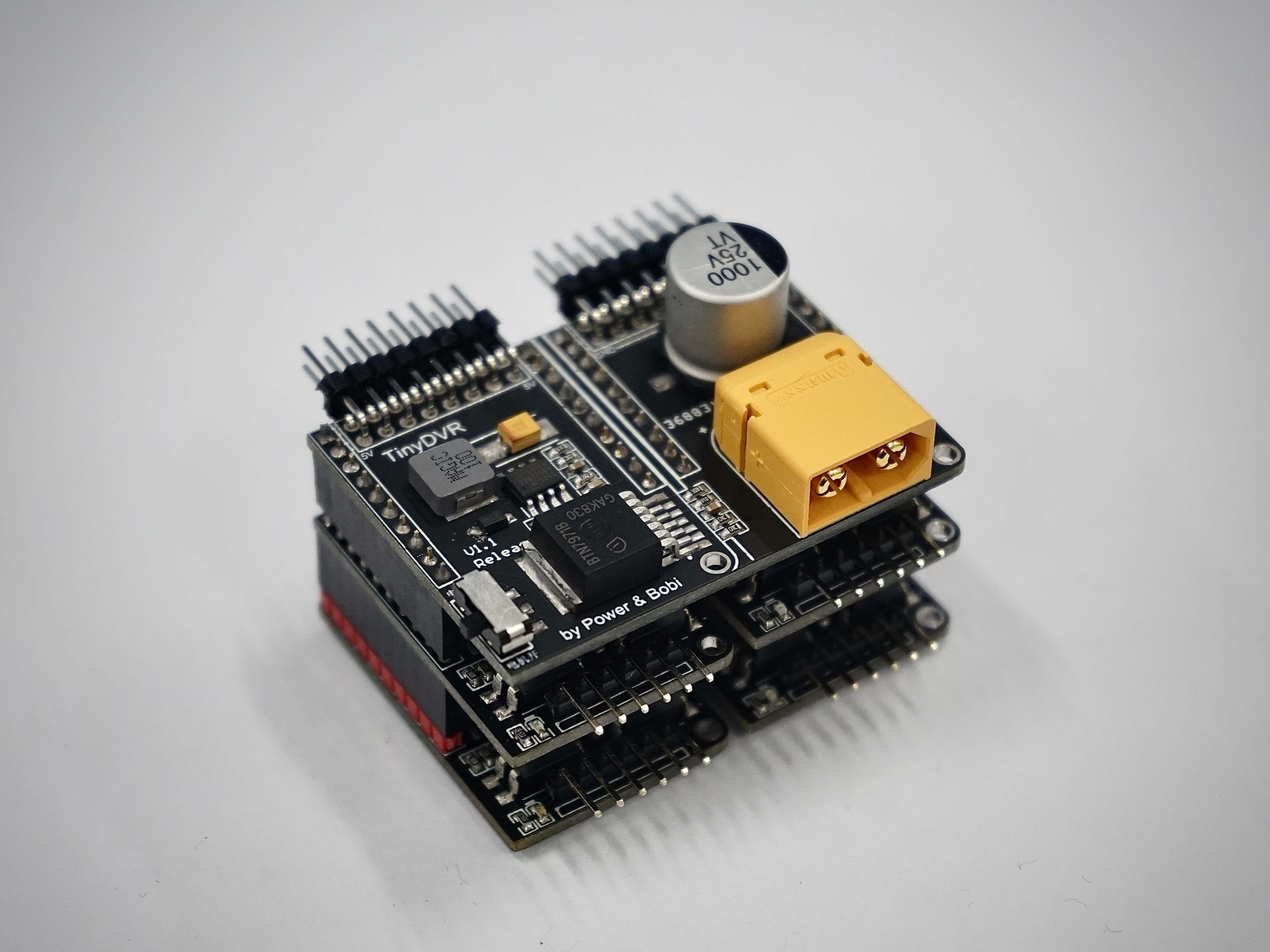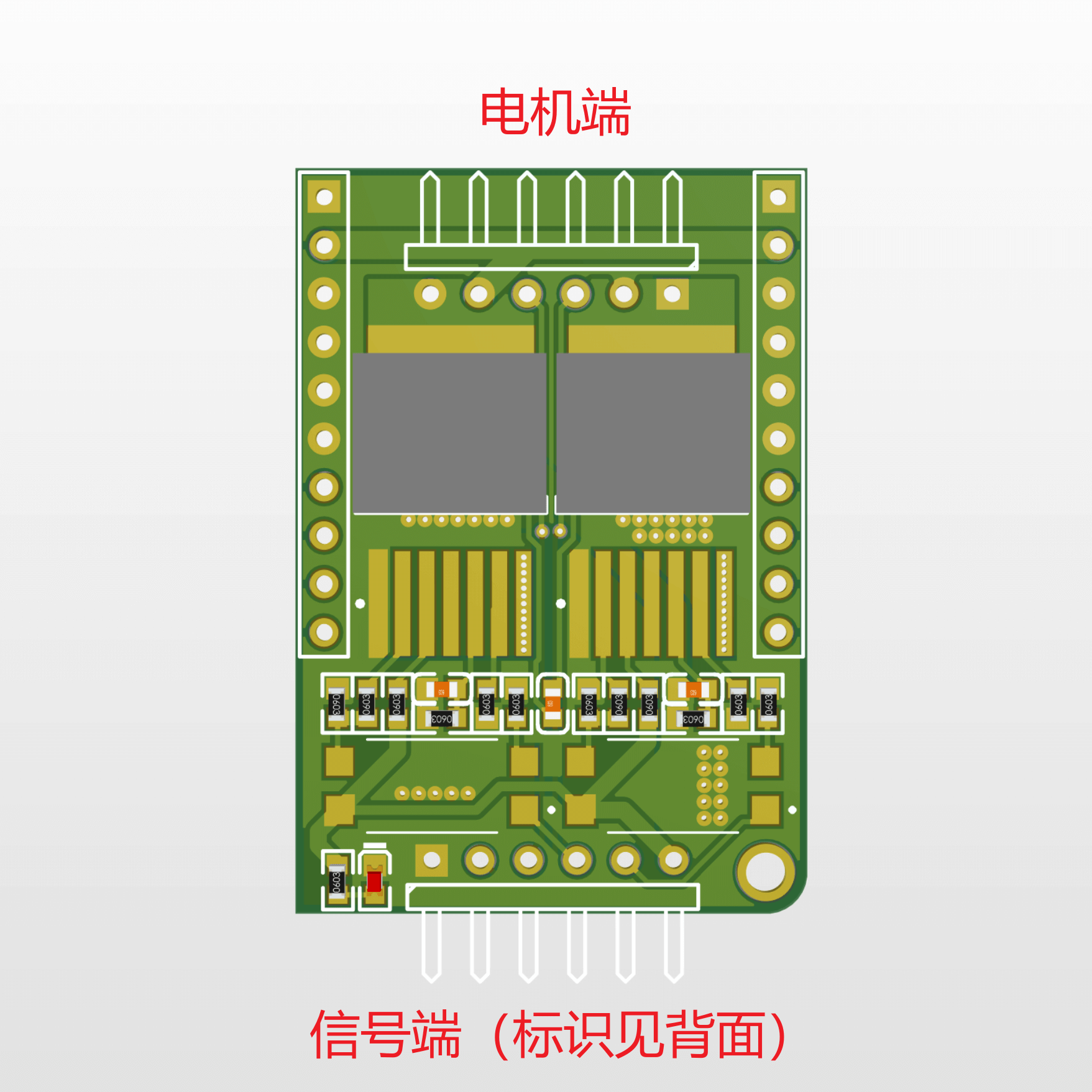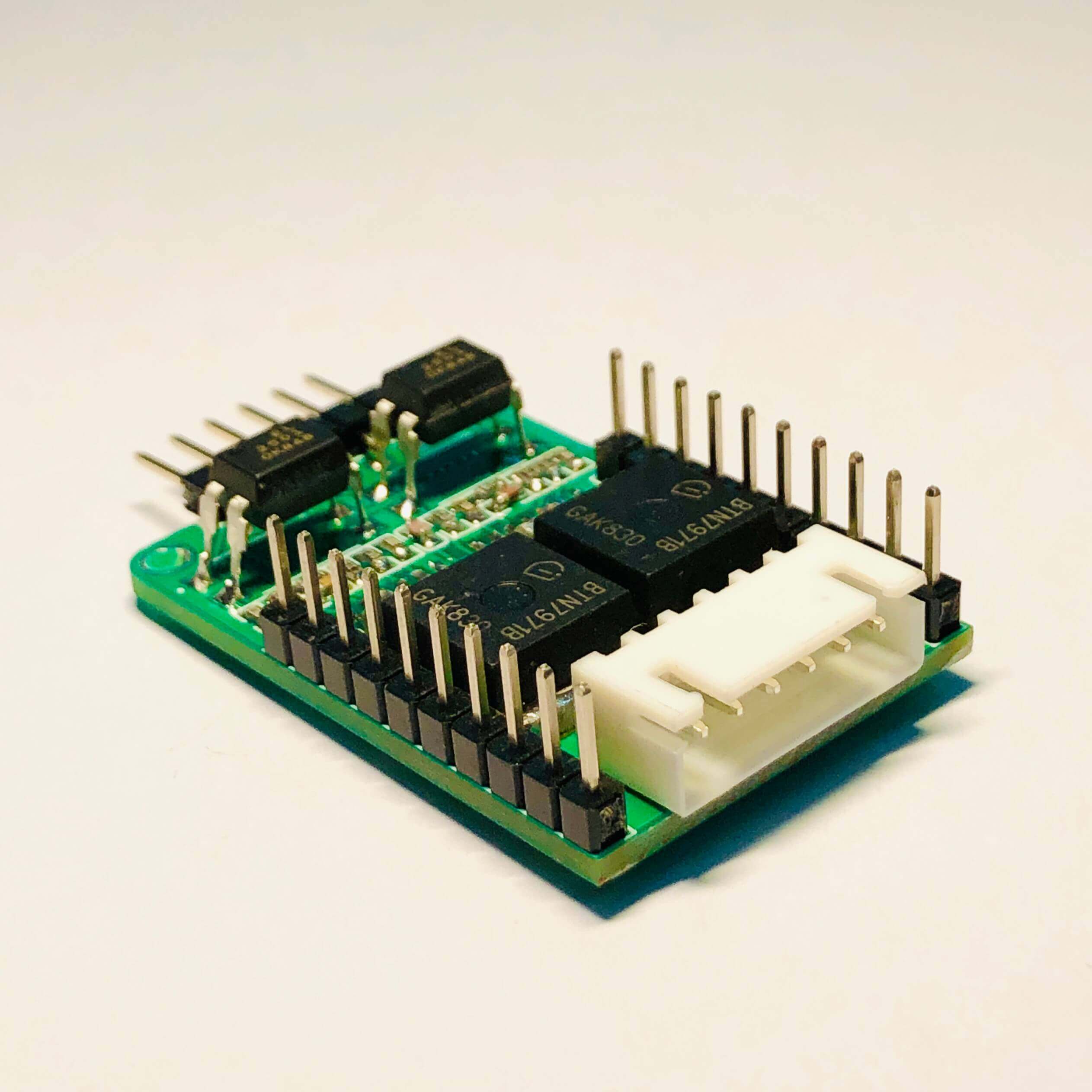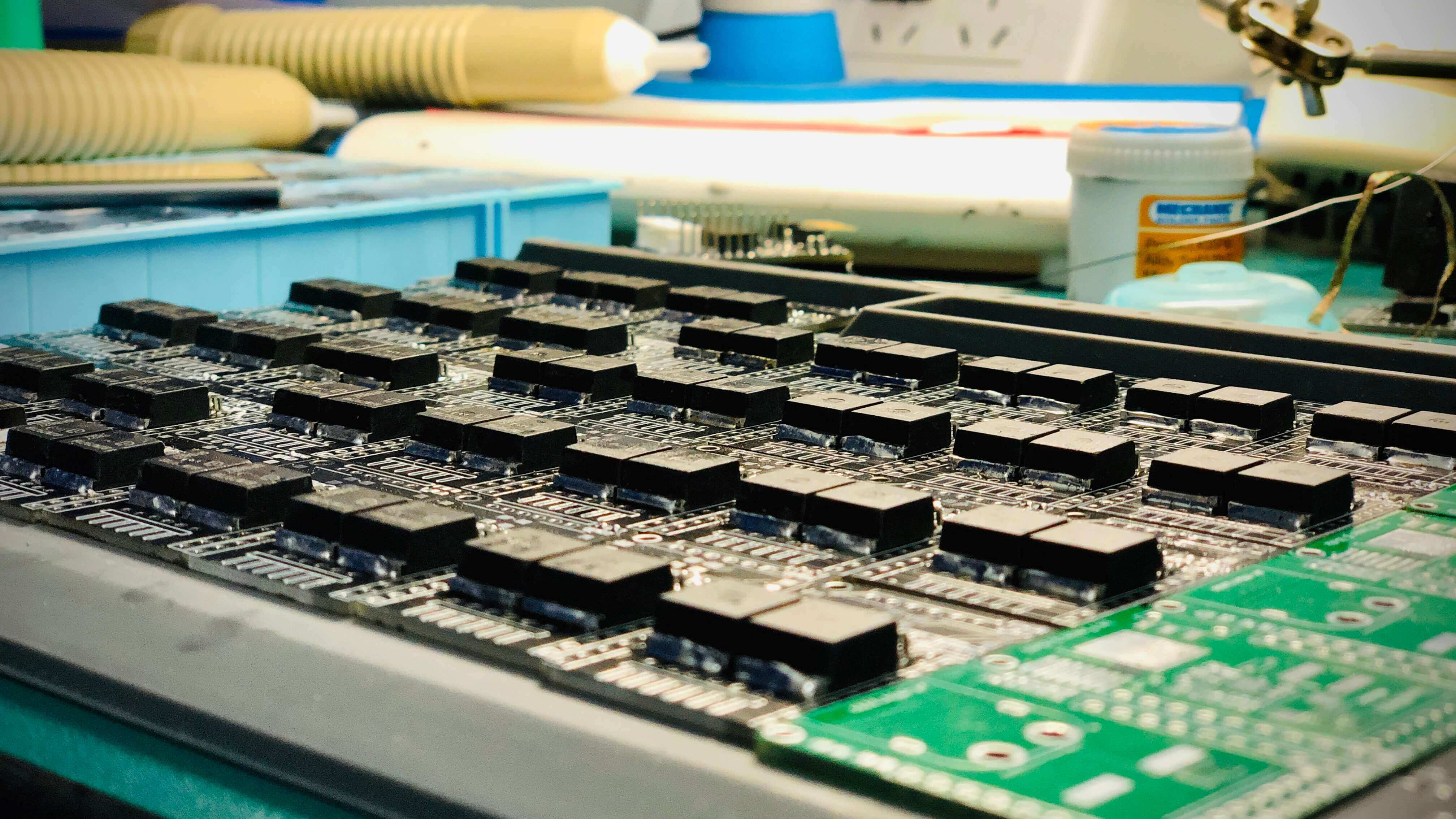TinyDVR - Compact Size, Loaded with Power
— Based on TinyDVR Master V1.1 & Slave V7.2 Release

TinyDVR is a motor driver kit that includes a mainboard (Master) and a subboard (Slave). It separates the power supply and the driving components, resulting in a significantly reduced size compared to its predecessor, ZenDriver. This design greatly enhances its expandability. You can stack different numbers of subboards according to your needs to drive multiple motors.
Project Repository: linyuxuanlin/TinyDVR
Online Preview of the Project:
TinyDVR_Master:
TinyDVR_Slave:
Basic Specifications
- Input Voltage: 7.2 ~ 20 V
- Output Current: 0 ~ 68 A
- Provides a 5V / 3A power output for controllers and other modules
- Protection Devices: Integrated reverse connection protection and optocoupler isolation circuit
- Motor Connection: Compatible with commonly available DC geared motors (with encoders) and can be directly connected with a 6-pin connector (no need for soldering)
- Expandable: One mainboard can stack multiple subboards, enabling control of multiple motors.
Interface Definitions
TinyDVR Master

TinyDVR Slave

Explanation of Back Pins:
- + : Provides 5V / 3A power output
- 1 : IN1 port, input PWM signal 1
- 2 : IN2 port, input PWM signal 2
- A : Encoder A-phase signal port
- B : Encoder B-phase signal port
- - : GND
User Guide
Testing Procedure
- Connect a 7.2 ~ 20 V battery for power supply.
- Attach the motor to the corresponding subboard.
- Connect the 5V power supply to the IN1/IN2 ports. At this point, the motor will operate in the forward/reverse direction.
Connecting to a Microcontroller
- Connect a 7.2 ~ 20 V battery for power supply.
- Attach the motor to the corresponding subboard.
- Connect the ground (drive board GND to microcontroller GND).
- Connect IN1 and IN2 ports to the microcontroller's respective PWM ports (set in your code).
- Testing procedure can be found in the project repository's test routine.
Behind the Scenes
Early subboards: 
Bulk soldering:

Original: https://wiki-power.com/ This post is protected by CC BY-NC-SA 4.0 agreement, should be reproduced with attribution.
This post is translated using ChatGPT, please feedback if any omissions.